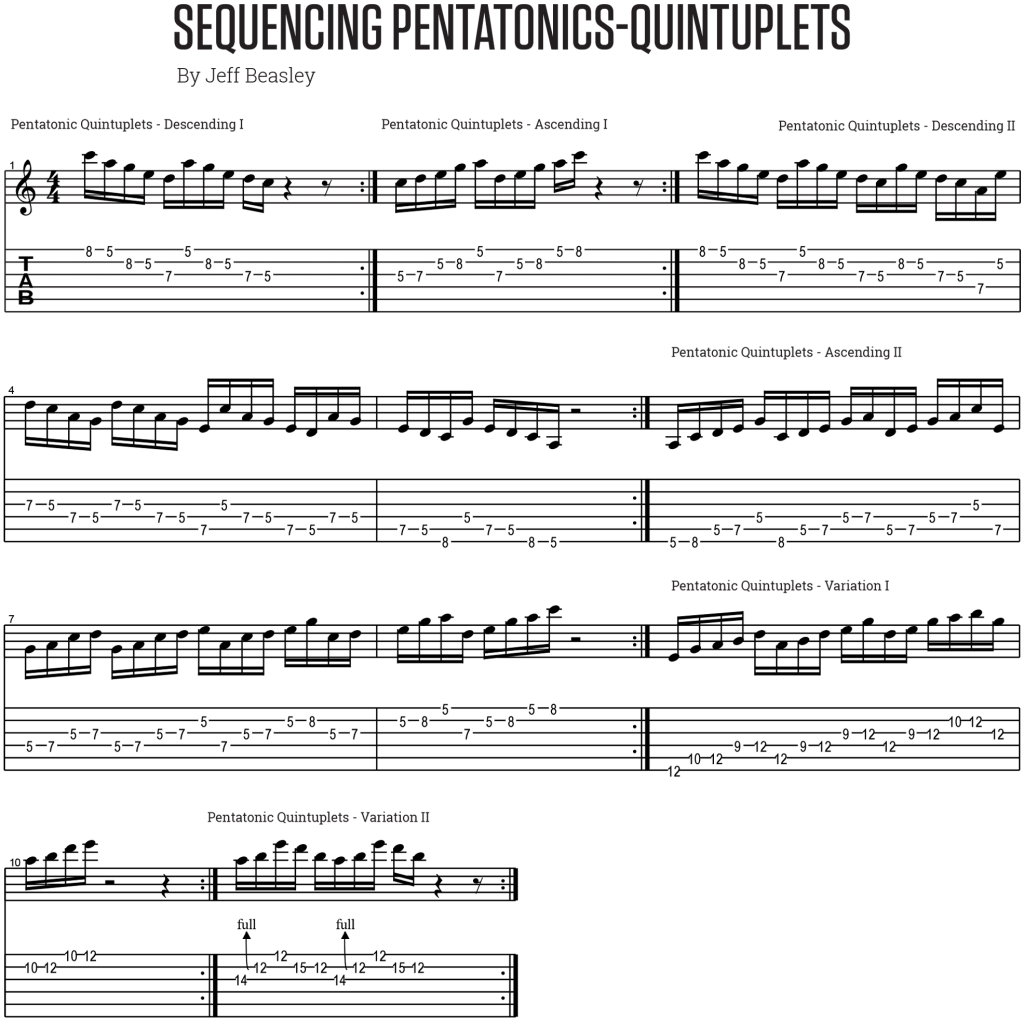Rock and blues guitarists consistently utilize the pentatonic scale in their writing and improvisation. The scale is one of the most common in these styles, as well as many other genres in western music. You don’t have to be an amazing technician to implement pentatonic ideas into your guitar playing, and there are a plethora of accessible variations of the scale for just about any guitarist, whatever your level.
However, there are also some challenging variations to this melodic idea. One of the more difficult approaches to the pentatonic is the sequential quintuplet. The sequence divides the tones of the scale into groupings of five, dramatically increasing the technical demands for the picking and fretting hand.
For example, when using strict alternate picking, each set of the five tones alternates its initial tone. If the first set of five begins with a down stroke, the second grouping will begin with an up stroke. This alternating initial tone will remain a constant if the grouping is repeated. Also, depending on the variant of the scale pattern used, you may encounter numerous string skips and even with economy picking obtaining accuracy can be challenging. The fingerings for the fretting hand can be somewhat unusual, and may require a bit of stretching, compensating for potential string skips.
Now that I’ve explained the challenges of the quintuplet sequence, let me say that it’s one of the most beneficial approaches to technique building. Any guitarist, who has a command of this grouping, has accomplished significant technical growth.
Finally, the quintuplet creates a truly amazing melodic ladder, that’s sure to gain your listeners attention.



